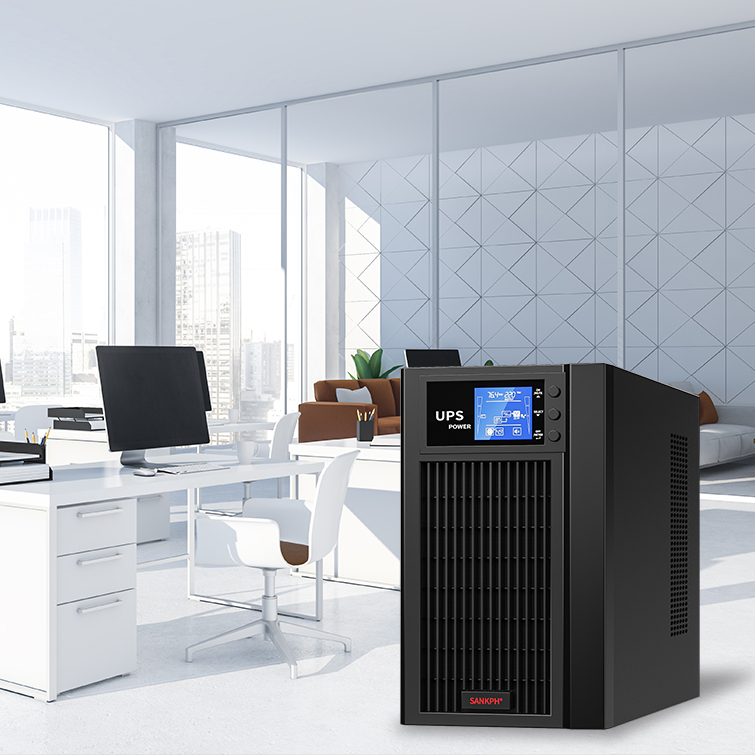Home / News / Industrial News
UPS uninterruptible power supply, as the title states, is like an extended time battery that allows a user to seamlessly switch on that device without always being dependent on the external power source as it can get operated at least for a specific time even when there is power outage. Nevertheless, most people tend to ignore that in the electricity power grid that supplies the power requisite for us, many different types of loads through many distribution lines, transformers, and interconnecting wiring to other transformers, distribution centers, or generating plants are attached to it. Several inductive, capacitive, switching power supplies and other sufficient loads not only pull power out of the grid, but also are able to apply some effects on the grid, such as voltage distortion or frequency drift of the voltage waveform of the mains, and thus generally tend to degrade the quality in which the grid or local grid is capable of supplying power. And some other spontaneous, anthropogenic or natural, for instance, earthquakes or lightning storms, breakers or short circuits within the power transmission and transformation system can be or simply happen for the whole power grid at all times, and this could also be a threat to the normal power consumption of electricity from the supply system, the siphoning off the so called, 'power quality' from the supply system and in turn affecting the operational status of the load.

The standard definition of mains electrical supply is: voltage fluctuation, 5% plus or minus, frequency 50 hertz with tolerance of 0.5 hertz. In most instances, however, there are parts, and even a lot of the time, which do not comply to this standard, for example in a lot of remote regions of our country. Pollution or disturbance can arise to the power grid that we are part of, grievous sometimes, from various internal and external contributors. There is a sense of understanding therefore, that the hardware, the information and the data on our computers or any of our devices are always under some form of menace. These sources of pollutons and interferences enumerated as follows: pollution puts stress on components of electrical equipment and machinery’s operations.
1. Voltage surge,: Is the effective value of the out put voltage which is 110 percent above the rated value and the duration is for one of several cycles. Surge is mostly caused by a high voltage that occurs when large electrical appliances that are on standby to the grid are switched off.
2. Voltage spike: This has the definition of the superposition of voltage pulses, which are more than six thousands kilovolts during the period of half a cycle to 100ms. This is due to reasons such as lightning, switch operation, arc faults and electrostatics discharge.
3. Voltage Transient: can be characterized as a pulse type of a voltage which has a peak of about 20KV but a duration of one millionth of a second up to a millionth of a second. The main cause and possible devastation it can bring about is similar to voltage spikes but differs in the number of times it occurs.
4. Noise voltage: pertains to radio frequency interference (RFI), electromagnetic interference (EFI) and other high-frequency annoyances. Noise interference on lines can be caused by the operation of motors, the action of relays, the operation of motor controller systems power line broadcast emissions, microwave radiation and electric storms.
5. Overvoltage: is a continuous high voltage which goes beyond a particular range of effective grid voltage in percent. Caused Typically by mistakes in wiring, mis-configuration in power generating plants or stations, and shutdown of large equipment that is nearby. As for single phase voltage, it can also be caused by unbalanced loads in three phases or bad bonding of the neutral line.
6. Undervoltage: pertains to the effective value of the mains voltage less than the rated value and lasts for a long time. The reasons for its occurrence are the starting and application of large equipment, power main lines switching, large motors starting, and line overloading.
7. Voltage sag: it refers to a condition within one or more cycles when the voltage is less than 80% to 85% of the effective value of the rated voltage. Primarily due to the starting load of a nearby heavy machine or the starting load of electric machinery.
8. Frequency offset: it means the change of the main frequency more than 3Hz. This is due to the erratic operation of auxiliary generators or power from unstable frequency sources.
9. Power interruption: A power interruption is in the state of having no power for more than one cycle. These can be attributed to circuit breaker tripping on the line, out of mains power supply, and power grid outage.

 Hot News
Hot News2024-08-27
2024-08-27
2024-08-27